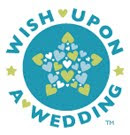Pictured Left to Right...
(Renee, Marjorie, Deb and me, Carrell...all with 'Beach Hair'...LOL!)
After having spent 3 gloriously fun days in 'Half Moon Bay' with 2 girlfriends and my business partner (and bestie), Marjorie...it hit me. I need to do a blog post on 'Beach Weddings'.
And, while I'm no expert on these, our three wild and wonderful days
left me realizing there were a few things that need to be taken into
consideration if you're planning your soiree at the beach. I mean,
seriously, what kind of wedding planner would I be if I overlooked the
obvious...right? Hee hee!
So, here we go...
On any given day in the summer, you can expect any one of these lovelies to possibly impact your 'Big Day'! So, let's be prepared!
Overcast...
Those of us who have spent any time in California understand all too well the phenomenons known as 'May Grey' and 'June Gloom'.
You wake up in the morning and the skies are overcast, and sometimes
drippy, and they don't clear up until about 3:00 or 4:00 in the
afternoon...if at all!
So, to prevent 'May Grey' and 'June Gloom' from ruining your big day, make sure you meander down to the beach at your ceremony time several days in a row to check out the skies. And if it looks like it's going to be overcast, you might even want to provide wraps, or 'pashminas', for your guests, just in case.
Fog...
Oh
my, fog can really put a damper on a big event...I'm sorry to say!
Remember, fog is unpredictable...very, very unpredictable. One moment
the sky above can be a glorious, sparkling blue with not a cloud in
the sky...and then all of a sudden...BAM...the fog starts rolling in.
And depending upon where you are, it can either roll in and out...or it can roll in to stay... :(
So heading down to the beach to check for fog several days in a
row before your wedding is a great idea. And if fog seems to be a 'given', again,
provide wraps for your guests. There is nothing worse than sitting in
the cold, and damp, at the beach, believe me. And remember too that many guests may assume because your wedding is at the beach it's going to be
sunny, warm and gorgeous, and may dress for warm weather.
Sun...
Ok...this
is the exact opposite of fog and overcast...but still needs to be taken
into consideration. Yes, sunshine is what everyone wants on their
wedding day, however, sitting in the sun for long periods of time,
especially at the beach can be problematic.
So, provide sunscreen for
your guests, and if you think there will be some guests who will be overly
sensitive to the sunshine, you might want to provide paper umbrellas as
well, just in case. You can get these pretty cheaply on a couple of
websites. 'OrientalTradingCompany' is one. And how cute is it to have a basket full of these beauties sitting by your ceremony site!
Wind...
Oh the dreaded wind! It too can come on 'just like that'. And while a beach breeze can be a blessing in disguise, it can also turn into a 'gale' in
a matter of moments. Here again, a little planning can make all the
difference. Check out your location several days in a row to check out
the wind patterns, and if need be, work with your planner to find a
location that is somewhat blocked from the wind...because not only is
wind in the hair a bother, it will also impact your decor, and blow sand
everywhere. And no one likes sand in their food!
And speaking of Sand...
We
all love the feel of sand between our toes...but not so much in our
food, our eyes and in our mouths. So, here again, remember to check for
blowing sand.
And since some guests may not realize that your
ceremony, and or reception, is actually on the sand, you might want to
provide a basket of flip flop for the ladies to wear so they don't ruin
their heels.
Ok...there
you have it....my suggestions for beach weddings. However, I recommend, first and foremost, that you work
with a planner who specializes in beach weddings. They're the experts who are well versed on the weather conditions, and will be able to steer you
to the right day and time for your glorious celebration. Then once you
have everything in place, and are feeling secure, you'll be able to
truly enjoy your dream wedding at the beach...
Until Next Time...
Making YOUR wedding InnCredible!
'InnCredible Events'
530.919.4588



























































